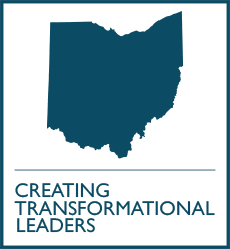Sep 17

First-Year Medicine Student to Present at Heart Failure Society Meeting
“Before I started at NEOMED as an M1, I worked for about 4.5 years as a researcher at the Lerner Research Institute at the Cleveland Clinic, in the Department of Cardiovascular and Metabolic Sciences.”
So wrote first-year Northeast Ohio Medical University College of Medicine student Rommel Morales when asked to provide a little background on himself for a story announcing that two of his abstracts had been accepted to the 2020 Heart Failure Society of America Scientific Meeting.
Wait a minute. How does someone move from their undergraduate days into a research position at the Cleveland Clinic? Or had Morales bypassed the typical high school-undergrad-professional school path and lived a whole chapter of life before ever coming to NEOMED?
If you want to count working as a technician making medical devices; earning a master’s degree in biotechnology from Northwestern University; and gigging briefly as a fashion and wedding photographer in Chicago – all before completing a stint of heart research at the Cleveland Clinic – then yes; Morales’ path to starting medical school at age 33 was a bit different from the traditional one.
Morales’s story began with challenges, when the illnesses and deaths of family members during a short span of time led to an interruption in his undergraduate studies. A fear of heart disease, which runs in his family, influenced his interest in heart research, said Morales in a recent Zoom conversation.
Born in Skokie, Illinois (a Chicago suburb), “I followed a girl to Northeast Ohio,” Morales confessed with a smile. His wife (whom he met at Northwestern) is from Hiram, not too far from NEOMED, and wanted to move back home. Morales’ first stop in Ohio was the Lerner Research Institute of the Cleveland Clinic, where he spent over four years working in heart failure research, a departure from the previous three years in the field of vascular surgery. Morales worked alongside M.D./Ph.D. researchers to help run both basic science studies and clinical studies – work that brought him in direct contact with patients.
Some of the scientific skills and the knowledge from that period has been transferable to his first-year College of Medicine studies, Morales said. And talking as a researcher with patients who were grappling with an ongoing condition so serious that it affected their life decisions opened his eyes.
Through such interactions, he said, “You get this reaffirmation of why you are in medicine.”
Morales described his new norm of preclinical years in the College of Medicine: classes, meetings, and poring over books late into the evening. But he cited his unique experiences as motivation, a way to solidify his patient-centric convictions as he starts his medical training.
Adding to his experiences, Morales has gotten involved with a large number of student organizations at NEOMED, focusing on the American Medical Association/Ohio Medical Student Association (AMA/OMSA), American Medical Women’s Association (AMWA) and the Scientista chapter.
Presenting the research
“With a research study, there are multiple ways the findings can be disseminated, ending with publication in a scientific journal. If you’re still working out details, presenting at a conference is a great way to get your work out there and get other opinions,” Morales said. Conferences are also a useful way for members of the scientific community to network and learn about related work being done, Morales notes.
Morales was a project lead for many studies while at Lerner, and by time of the Heart Failure Society abstract submission deadline this past June, he was wrapping up two of them and preparing manuscripts.
He describes the poster presentations for the two studies (abstracts) he will present (virtually) at the 2020 Heart Failure Society of America Scientific Meeting at the end of September:
“C3a, C4a, and C5a Complement Anaphylatoxins Differentially Accompany Acute and Chronic Heart Failure”
There are many similarities between what happens during an infection and what we see in patients during heart failure. This study examined three major players in a well-known immune process known as the complement system and how they differed in acute and chronic heart failure patients.
“Circulating Osteocrin Levels Do Not Track with Myocardial Function in Chronic Systolic Heart Failure”
A recent study in mice showed that administration of a naturally produced molecule (Osteocrin) could have protective effects during a heart attack. Our study pursued this in chronic heart failure patients – first, by tracking how much Osteocrin was produced in patients and second, by determining whether high Osteocrin levels could provide similar protection as seen in mice.

